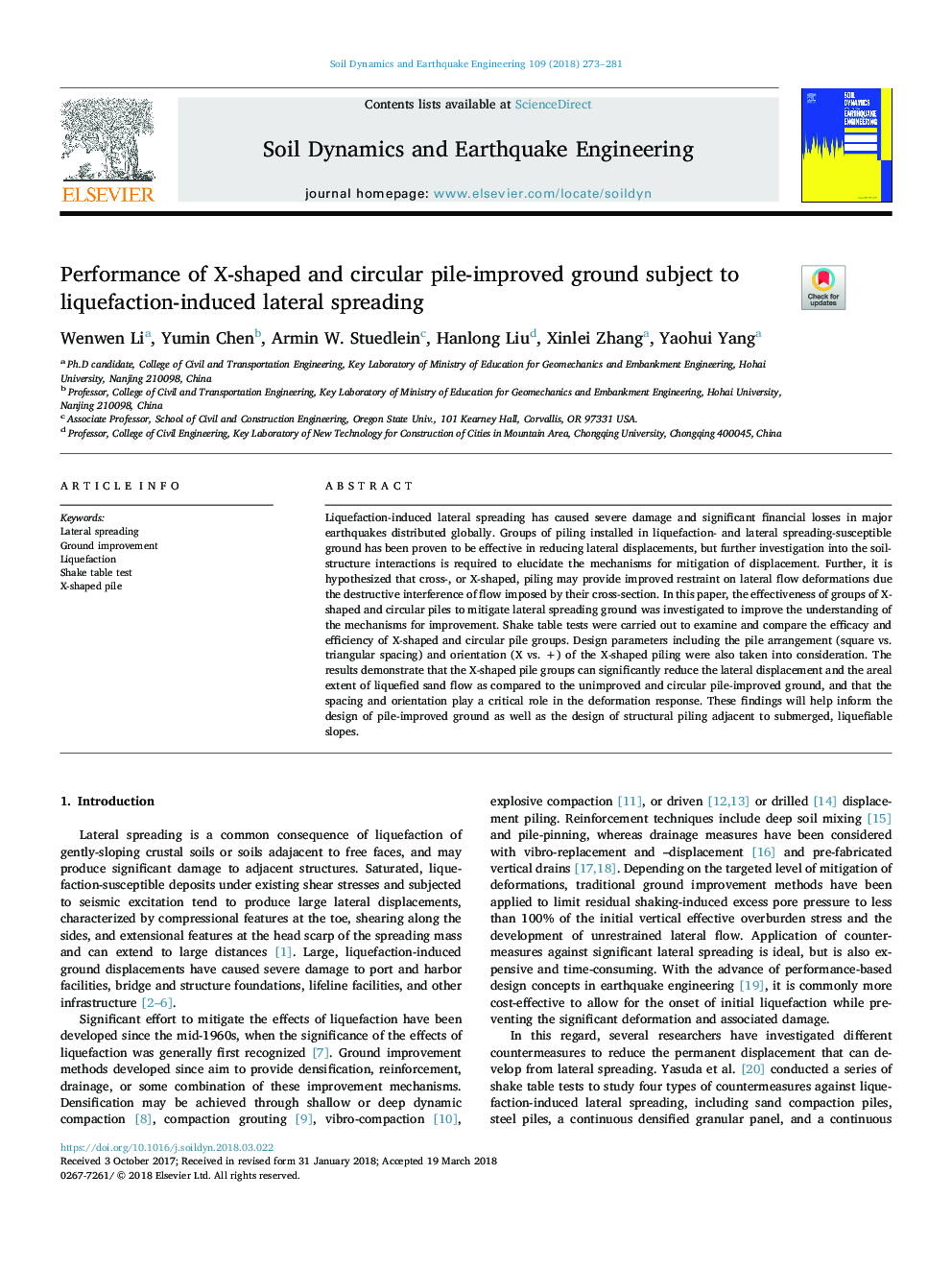| Article ID | Journal | Published Year | Pages | File Type |
|---|---|---|---|---|
| 6770519 | Soil Dynamics and Earthquake Engineering | 2018 | 9 Pages |
Abstract
Liquefaction-induced lateral spreading has caused severe damage and significant financial losses in major earthquakes distributed globally. Groups of piling installed in liquefaction- and lateral spreading-susceptible ground has been proven to be effective in reducing lateral displacements, but further investigation into the soil-structure interactions is required to elucidate the mechanisms for mitigation of displacement. Further, it is hypothesized that cross-, or X-shaped, piling may provide improved restraint on lateral flow deformations due the destructive interference of flow imposed by their cross-section. In this paper, the effectiveness of groups of X-shaped and circular piles to mitigate lateral spreading ground was investigated to improve the understanding of the mechanisms for improvement. Shake table tests were carried out to examine and compare the efficacy and efficiency of X-shaped and circular pile groups. Design parameters including the pile arrangement (square vs. triangular spacing) and orientation (X vs. +) of the X-shaped piling were also taken into consideration. The results demonstrate that the X-shaped pile groups can significantly reduce the lateral displacement and the areal extent of liquefied sand flow as compared to the unimproved and circular pile-improved ground, and that the spacing and orientation play a critical role in the deformation response. These findings will help inform the design of pile-improved ground as well as the design of structural piling adjacent to submerged, liquefiable slopes.
Related Topics
Physical Sciences and Engineering
Earth and Planetary Sciences
Geotechnical Engineering and Engineering Geology
Authors
Wenwen Li, Yumin Chen, Armin W. Stuedlein, Hanlong Liu, Xinlei Zhang, Yaohui Yang,
